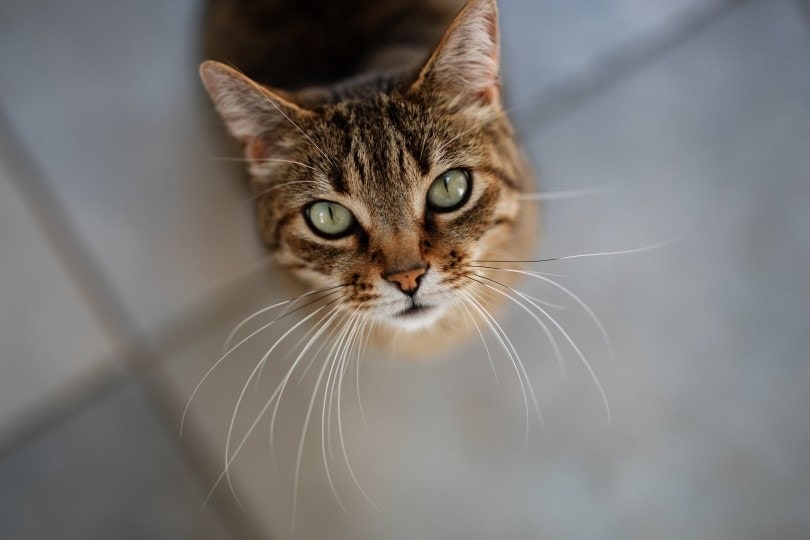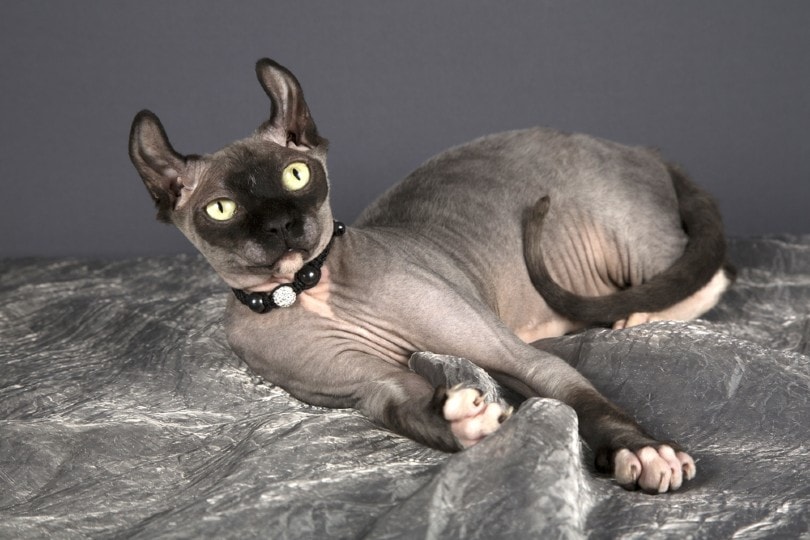Burmese vs. Bombay Cat: The Main Differences (With Pictures)
Updated on
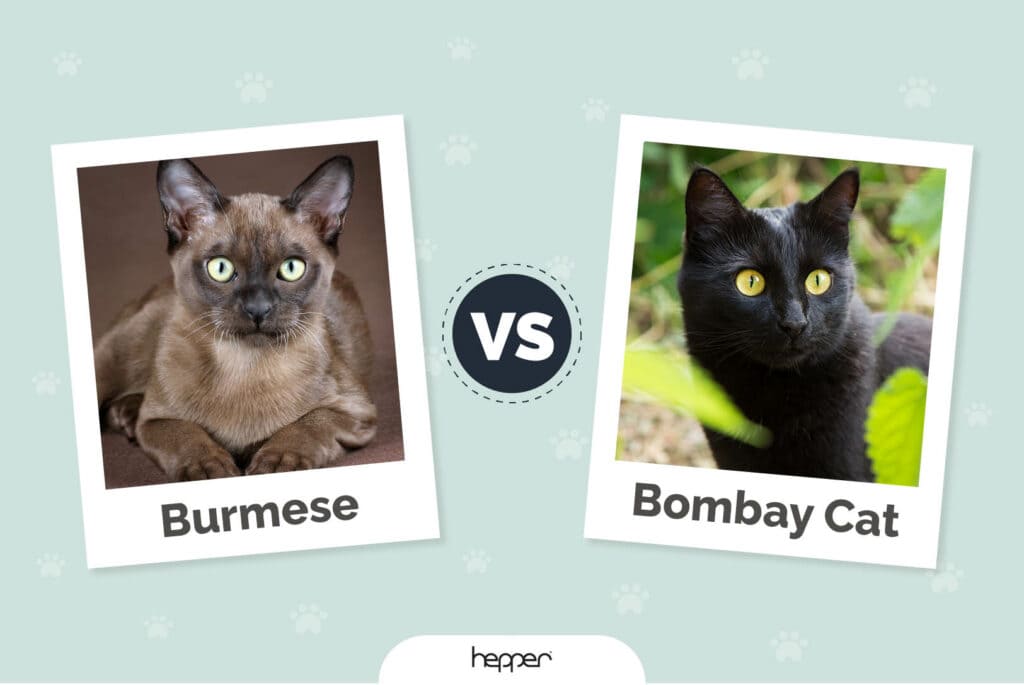
The Burmese and Bombay cats are loving feline companions. They genuinely enjoy people and being a part of the day-to-day activities of the household. Both breeds need attention and aren’t suitable in homes where they’ll be alone often. They thrive where they can get a lot of attention with plenty of mental stimulation to keep them occupied.
While they have a few similarities, there are some stark differences that exist between the two breeds. Both are relatively new to the cat world, with careful selective breeding by devoted enthusiasts. They are welcome additions to the 73 breeds recognized by The International Cat Association (TICA).1
Visual Differences
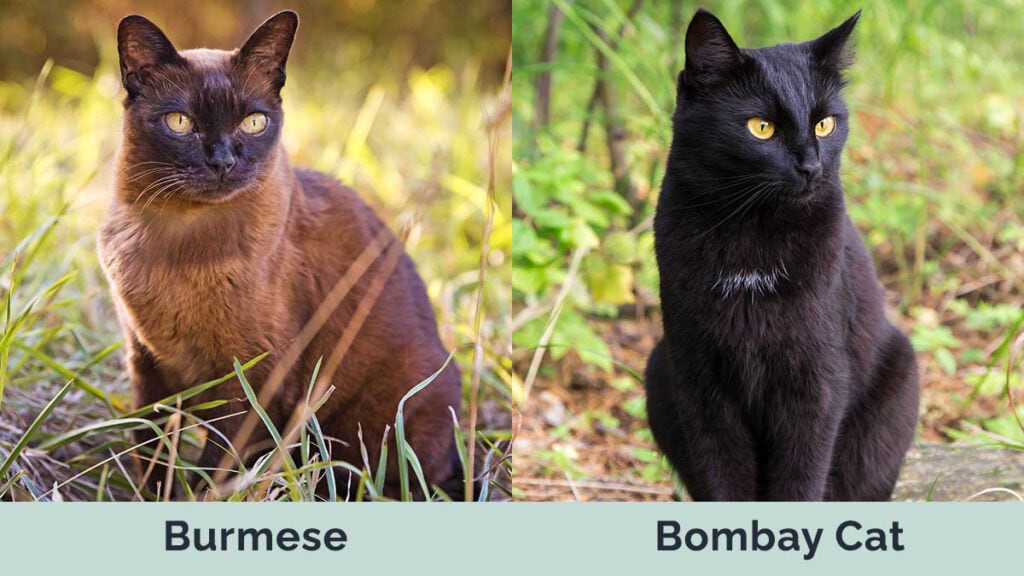
At a Glance
- Average length (adult): 15–18 inches
- Average weight (adult): 8–12 pounds
- Lifespan: 12+ years
- Activity level: Very active
- Grooming needs: Moderate
- Family-friendly: Yes
- Other pet-friendly: Often
- Average length (adult): 13–20 inches
- Average weight (adult): 8–15 pounds
- Lifespan: 12+ years
- Activity level: Active
- Grooming needs: Moderate
- Family-friendly: Yes
- Other pet-friendly: Often
Burmese Overview
The Burmese is a medium-sized cat of average length and weight. It has a silky coat with accepted colors from blue to platinum to sable. You will also see it in tortoiseshell hues. It is a striking animal with expressive eyes that you can’t fail to notice. If you don’t, it will make sure that you do.
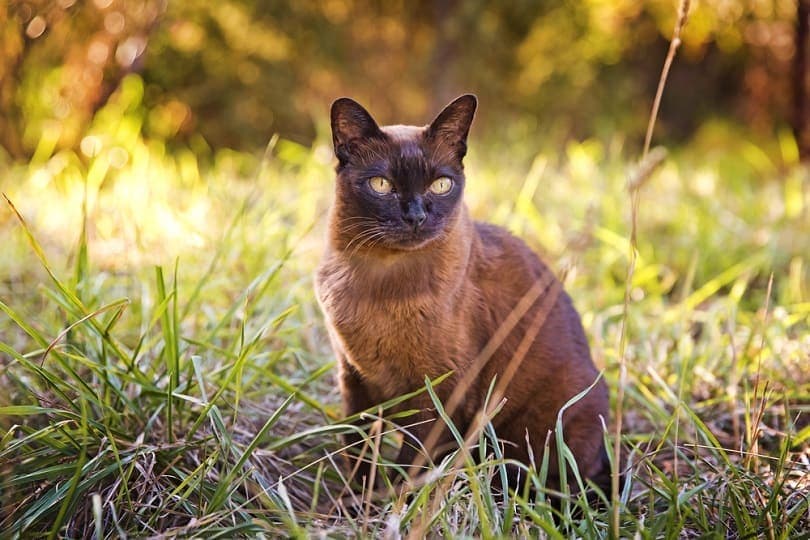
History
All Burmese cats in the United States can trace their ancestry to one female: Wong Mau.2 The breed’s native land is Southeast Asia, including the country Myanmar, also called Burma, which gives the animal its name. If you think it looks like a Siamese, you’d be correct. The initial selective breeding included a cat for this breed. Sepia was the preferred color initially before seal points appeared within its ranks.
It’s worth noting that the breed also took shape in the United Kingdom around the same time. Similar crosses produced the European version of the Burmese.
Personality
The sweet personality of the Burmese is probably the main thing attracting people to this breed. This one is a lover and a cuddler. If you want a lap cat, look no further. It is an intelligent animal that needs activity and attention to keep it occupied. Interactive toys are an excellent choice for this curious feline.
Health & Care
The Burmese is a relatively healthy animal that is long-lived for a cat. It’s not unusual for it to live well past 12 or more years. The only significant concern with this breed is hypertrophic cardiomyopathy, a congenital heart ailment.3 Fortunately, it is not prevalent in this breed. However, pet owners should get their cats screened for the condition as adults.
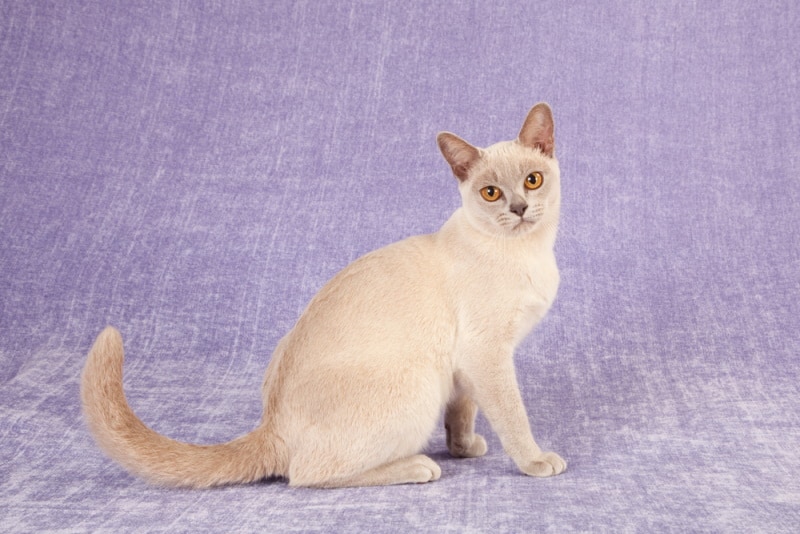
Suitable for: Families and Active Households
The Burmese is a highly active cat. It’s playful and energetic enough to do well in a household with children or other pets. It is adaptable, making it an excellent choice for apartment dwellers.
It’s essential to prevent boredom with plenty of mental stimulation. Plus, it is a vocal animal that won’t hesitate to let its feelings be known.
Bombay Cat Overview
The Bombay is a medium-sized cat that is muscular and heavier than it may look. It looks like the Burmese, but it only comes in black. It’s a good-looking animal with a sleek coat that almost gleams. Its small pointy ears and large eyes are sure to catch your fancy.
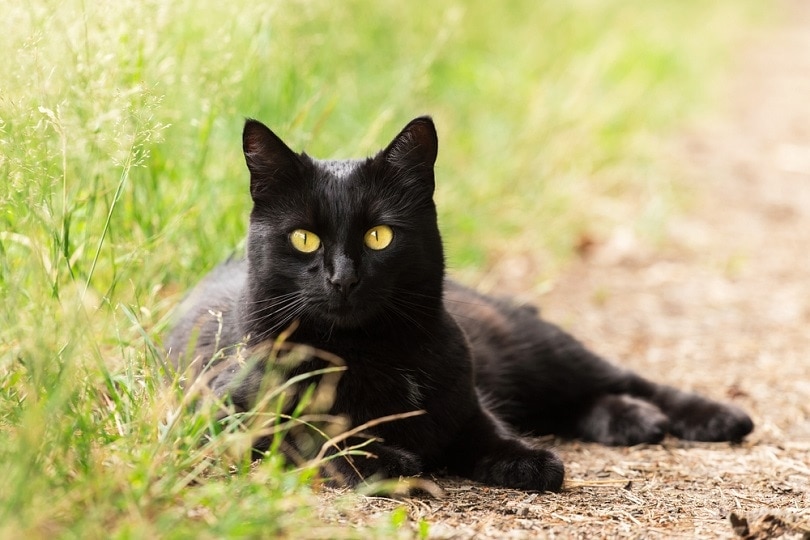
History
If you think this cat looks like a panther, then Nikki Horner was successful in her mission to selectively breed the Burmese and American Shorthair to resemble its wild counterpart. The Bombay got its start in the 1950s in Kentucky. Enthusiasts wanted specific traits, combining the parent breeds to come up with a unique feline.
The Bombay’s history takes a page out of the Burmese’s book. Enthusiasts also selectively bred this cat across the pond in the United Kingdom.
Personality
The personality of the Bombay is similar to the Burmese. It is active and playful with a need for attention. Mental stimulation is paramount with this intelligent animal. It’s an easygoing cat that will get along with everyone in the household, including other pets. It also loves people and being around them. This feline isn’t a loner by any means.
Health & Care
The Bombay is a healthy cat with few significant concerns other than hypertrophic cardiomyopathy. It has a shorter snout than the Burmese. That can make respiratory issues a problem in some cats. We suggest only getting a kitten from a breeder who raises their cats in their home to ensure it gets plenty of human interaction when young and impressionable.
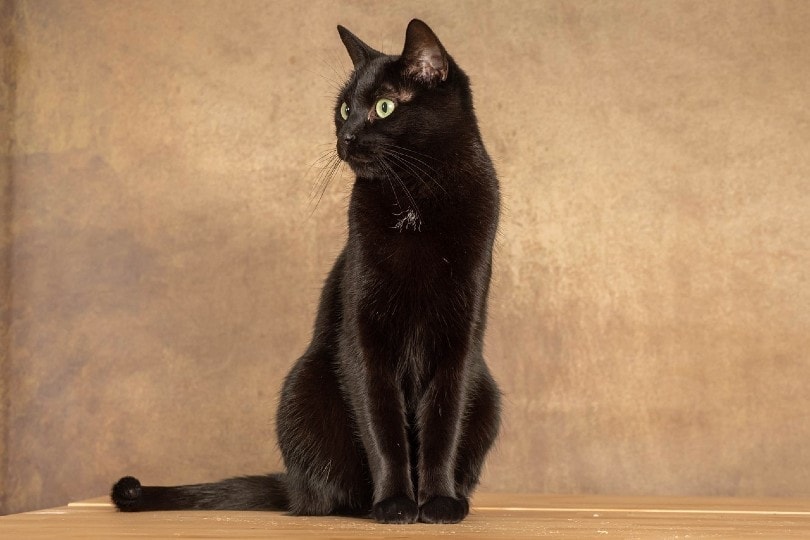
Suitable for: Households With Children or Other Pets
The friendly personality of Bombay makes it an excellent choice for a family with kids or other pets. This cat will fit in famously. The caveat is that this feline needs and demands attention. It is not suitable in households where one would spend a lot of time alone. It can develop separation anxiety and behavioral issues if it doesn’t get its fix of human interaction.
Which Breed Is Right for You?
The Burmese and Bombay cats are similar felines. They are active yet need attention to be happy. The former might have a slight edge on how energetic it is. The latter tends to take a wait-and-see approach as it gets older. Both are relatively healthy and long-lived breeds. The choice between the two will probably boil down to a face-to-face meeting.
Featured Image Credit: (L) Ivanova N, Shutterstock | (R) Viktor Sergeevich, Shutterstock





